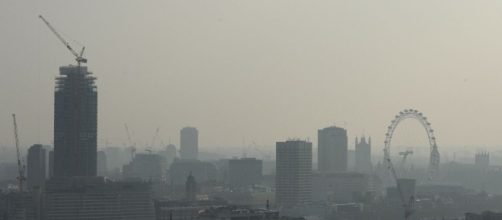When Elizabeth II was yet to be crowned Queen and Winston Churchill still stood as Prime Minister of England, a thick smoky fog lay over London for three days. In 1952 The Great Smog covered the capital, caused by a mixture of air pollutants and weather patterns the smog was the worst in London’s history. Fast-forward to 2017 and air pollutants are up to the same old tricks, with records of exceeded air Pollution growing in the UK year after year. On January 6th, 2017 London Air reported that Brixton Road in Lambeth had reached its annual limit of air pollution for the entire year in just five days.
The current limit suggests that air pollution levels cannot exceed 200 micrograms per cubic metre of toxic nitrogen dioxide more than 18 times per year. In 2016 this amount was exceeded in all areas of London, with Putney High Street being the worst offender, exceeding this 1,200 times.
British Government sued over air pollution issues
The mayor of London, Sadiq Khan, has said he will increase his funding towards this issue to £875 million over the next five years, yet the UK government has many critics when it comes to tackling this problem. In November 2016, ClientEarth, an environmental organization, sued the British Government for failing to take action; The CEO of ClientEarth commented that “the time for legal action is over” as he challenged Theresa May to “take immediate action now” and finished by saying that “Britain Is watching and waiting, Prime Minister” (source: ClientEarth).
Labeled “Public Health Emergency” by MPs
Yet, the environmental impact of rising air pollution is not the only central issue as air pollution continues to rise. Recent public health statistics show that pollution, mainly caused by diesel vehicles, causes 5,900 deaths of Londoners annually. Additionally, new studies suggest that 1 in 10 cases of city-dwelling Alzheimer’s patients may be linked to air pollution. Penny Woods, chief executive of the British Lung Foundation, suggested that this shows “the extent of the public health crisis we are now facing” (source: The Guardian), while MPs in April announced this as a public health emergency. Only Italy is currently ousting the UK at being the highest in Europe for annual public deaths by NO2, caused predominantly by diesel vehicles.
While we may not be continuously reminded of our air pollution by way of a great smog, there is no doubt that much needs to be done in order to curb the rising tides of air pollution in Britain. The UK must follow the example of cities like Paris, Madrid and Athens who agreed to a diesel car ban from their city centres by 2025. While London already has clean air and low emissions zones, there needs to be an increase in these numbers. A government spokesperson commented that air quality plans would be updated in the Spring and that since 2011 the government has placed £2bn into supporting transport plans that are low-emission and greener. As air pollution levels rise the UK needs to be at the forefront, setting an example in climate-friendly policies for other nations to follow.

